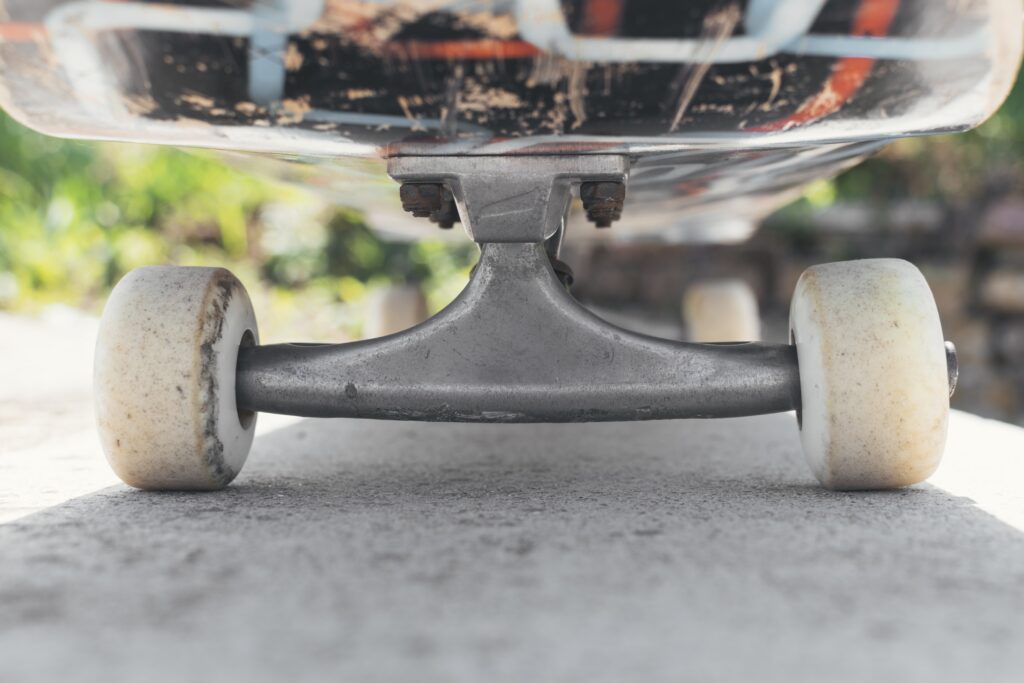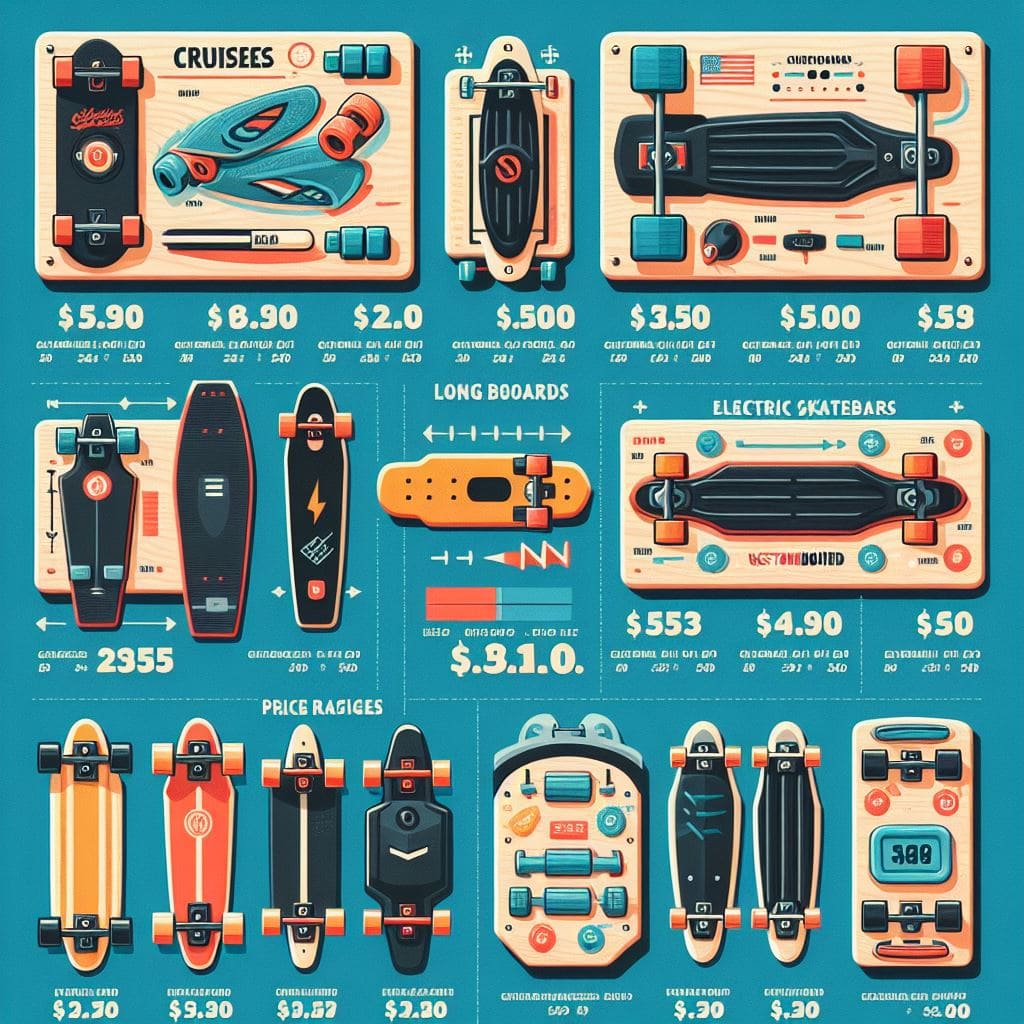Skateboard setup is a critical aspect of your skating experience. Whether you’re cruising the streets or pushing boundaries with tricks at the skate park, you know that it’s more than just stepping on a board. The right setup can enhance maneuverability, speed, and overall performance. But have you ever wondered just how tight should skateboard wheels be?
Understanding the proper tightness of your skateboard wheels is a crucial element that’s often underestimated. It’s not just a matter of preference – it can revolutionize your skateboarding journey. With the right wheel tightness, you can gain unparalleled control, precision, and a ride filled with exhilaration.
This post is a gateway to the fascinating world of skateboard wheels, revealing the optimal tightness for a personalized skating experience. Regardless of your expertise, there’s always room for growth and new discoveries. So, why not embark on a journey of learning and experimentation?
Understanding Skateboard Wheels
Skateboard wheels are integral to your riding experience. They can dramatically alter the way you glide, slide, or ride. Whether you’re a fan of skating streets and parks or love pulling off jaw-dropping tricks, your wheels can make a crucial difference.
Essentially, skateboard wheels are made from urethane. Invented in the 1970s, the urethane skateboard wheel changed the face of skateboarding, transcending it from a fad into a serious sport. Fast forward fifty years, and the wide variety of wheels we see in the market today are all descendants of this original invention.
When we discuss the diverse types of skateboard wheels, there are numerous factors to consider, like size, hardness, shape, and tightness. Each attribute can contribute significantly to the performance and feel of your ride. For example, larger wheels offer better stability but can decrease maneuverability, while smaller wheels make for a quick, zippy ride.
Now, let’s discuss wheel hardness or durometer. Skateboard wheels usually range from 75A (soft) to 101A or higher (hard). The hardness of your wheel is critical for the riding surface – hard wheels are better suited for smooth pavement or skate parks, while soft wheels are ideal for bumpy sidewalks and streets.
Besides size and hardness, the shape of your wheels also impacts the riding experience. There are five skateboard wheel shapes – narrow, wide, square-edged, round-edged, and cruiser. As you might expect, each shape has its benefits, and your ideal shape depends on your type of skateboarding.
Finally, we hit the topic of the day – the tightness of the skateboard wheels. Unlike the material, size, hardness, and shape, the tightness of the wheels is something you have control over. Adjusting the wheel’s tightness can play a key role in your riding experience. It can affect your cruising speed, the smoothness of your ride, your ability to slide, and several other facets of skateboarding.
In summary, understanding the basics of skateboard wheels is vital to improving your riding experience. Knowledge about various types of wheels and their roles in skateboarding performance will allow you to adjust your skateboard setup to your preference, leading to an optimized performance. So, next time you shop for skateboard wheels, take a moment to think about your preferred style of skateboarding and the wheel size, hardness, shape, and, of course, tightness that would best suit your style.
The Mechanics of Wheel Tightness
In the context of skateboarding, wheel tightness refers to how snugly your wheels are attached to your board. It’s a fine balance – you do not want the wheels too loose that they wobble nor too tight that they don’t spin freely. Correcting the wheel tightness is critical to your skateboard’s performance and safety.
The science behind the right tighten comes down to two primary factors: the locknut and bearing. You’ll find a wheel, two bearings, and a locknut on a standard skateboard axle. The locknut is the adjustable part screwed onto the truck axle, securing the wheel but still allowing it to rotate.
The rule of thumb is that your wheels should be as loose as possible, without any lateral play or wobble. What does this mean? It’s when the wheel spins freely without shaking side to side on the axle. Any sideways movement means the wheel is too loose; it’s probably too tight if you can’t spin it freely with your hand.
The next factor is your bearings. Bearings are small mechanisms inside your wheels, helping them roll smoothly. They indirectly affect your wheel tightness because they determine how freely your wheel spins. High-quality bearings could lead to a smoother, faster ride even at the same tightness as low-quality ones.
Apart from these two mechanical factors, other considerations other considerations can impact the ideal wheel tightness, including your body weight, riding style, and personal comfort criteria. Each of these influences how your board performs under different levels of wheel tightness.
For instance, heavier riders might need tighter wheels to prevent wobbling, while lighter riders might get away with slightly looser ones. Those who enjoy mastering tricks might prefer looser wheels, while those who value stability and control during high-speed downhill rides would favor tighter wheels.
Understanding these mechanics gives skaters the knowledge to customize their skateboards, enhancing their riding experience. After all, board dynamics alter based on the factors we’ve mentioned. There’s no definitive number on how tight your skateboard wheels should be suit everyone. The ‘right’ tightness is subjective and can be influenced by numerous variables.
Discovering your preference may take some time and plenty of trial and error. Changing your wheel tightness and experiencing the changes it brings to your ride can be a valuable learning experience. Pay attention to the differences each tweak makes. It could improve your tricks, speed control, or your overall enjoyment of the sport.
How Tight Should Skateboard Wheels Be
The question, “How tight should skateboard wheels be?” is at the crux of manipulating your skating experience. Many experienced skateboarders would agree that the tightness of skateboard wheels largely depends on individual preference and skating style – there’s no ‘one-size-fits-all’ solution.
While there aren’t standardized measurements for wheel tightness, we have a general guideline. As mentioned earlier, an ideal wheel tightness is when the wheels are loose enough to spin freely yet tight enough to prevent any lateral wobble.
Now, the question evolves from “How tight should skateboard wheels be?” to “How do different wheel tightness affect different skateboarding styles?”. Well, let’s dive into this.
For beginners, tighter wheels can provide a semblance of stability, fostering a sense of safety while learning the ropes. On the other hand, loose wheels present an entirely different dynamic since they enhance maneuverability for tricks and, hence, are favored by street skaters and skateboarders pushing their limits at a skatepark.
Cruisers and long-boarders often live by the mantra ‘loose wheels for loose rides’- since they augment the ease of diving into smooth turns and carving the streets. Similarly, for fans of freestyle skating, who perform tricks requiring quick and sharp turns, slightly looser wheels can be a boon.
On the contrary, if high-speed or downhill skateboarding triggers your adrenaline, tighter wheels should be your go-to choice. Tighter wheels provide more stability and banish speed wobbles at high velocities.
However, all of these are subject to the skateboarder’s level of expertise. An experienced skater might handle loose wheels at high speeds with panache, while a novice might feel comfortable performing tricks with tighter wheels. It’s all about personal comfort and skill level.
Therefore, the answer to “How tight should skateboard wheels be?”. It depends on the individual skateboarder’s comfort, style, skill, and preference. The right wheel tightness for you could be too tight or too loose for someone else.
Remember, while these are helpful guidelines, the best way to determine your ideal wheel tightness is experimentation. Continually adjust your skateboard wheels to find the sweet spot that offers the perfect blend of stability and flexibility, suiting your style and needs. Each skateboarder’s ‘perfect ride’ is different, making skateboarding a sport rich in diversity.
Impact of Tight and Loose Wheels on Skateboarding
Understanding the profound influence of wheel tightness on your skateboarding performance is key. It’s not just about the speed or maneuverability of your skateboard, but also about your safety. By grasping these effects, you can effectively adjust your wheel tightness to enhance your skateboarding experience.
Starting with tight wheels, these tend to fare well in terms of stability. Skateboarding with tight wheels can help the rider maintain a straight line without much effort. This feature proves beneficial, especially when it comes to high-speed skateboarding or downhill riding. Tight wheels diminish the chances of undesired swerving or speed wobbles, providing a steady ride, which is crucial at high speeds.
Safety-wise, beginners would be better off skating with slightly tighter wheels. The added stability factor helps in reducing the risk of losing balance and falling. However, tighter wheels may limit the skateboard’s turns and tricks due to the decreased wheel mobility.
Shifting the focus to loose wheels, these allow for significantly improved maneuverability. The wheel’s ability to tilt a bit on the axle, which loose wheels permit, goes a long way in enhancing the turning radius of the skateboard. This feature is especially beneficial for skateboarders who perform complex tricks or those who prefer freestyle, park, or street skateboarding.
Loose wheels also excel in cruising and carving. The freedom in wheel mobility makes it easier to lean into turns, making it feel more like smooth sailing or surfing, thus enjoying a more relaxed and fluid ride. However, it’s worth noting that loose wheels may cause speed wobbles at high speeds, which could lead to potential falls or accidents.
While each of these wheel tightness levels reduces and enhances different features, it’s important to remember that you, as a skateboarder, have the power to choose. Your personal preference, comfort, aesthetics of the ride, the skateboarding terrain, and your unique style all play a significant role in determining your ‘right’ tightness. It’s all about finding your sweet spot and feeling confident in your setup.
Don’t underestimate the impact of wheel tightness on your skateboarding journey. It can transform your style, performance, safety, and overall satisfaction. So, don’t hesitate to tweak your skateboard’s wheel tightness and discover the potential game-changing benefits for yourself.
This closing section concludes our comprehensive exploration of the significance, mechanics, and impact of wheel tightness in skateboarding. We’ve covered everything you need to know, and we hope this information has provided you with a newfound perspective towards wheel tightness and its importance in crafting your perfect skateboarding experience. Feel informed, feel satisfied, and keep shredding!
How to Adjust Skateboard Wheel Tightness
If you’re keen on adjusting your skateboard’s wheel tightness, it’s actually simpler than you might think. All you’ll need is a good quality skateboard tool. This handheld device usually comes with three different socket sizes, designed to fit skateboard trucks, wheels, and hardware. Here’s a step by step guide to getting your wheels just right.
The first step is to locate the axle nut. This nut is what determines the tightness of your wheel and is what you’ll be adjusting. It’s usually a locknut that’s positioned on the truck’s axle, right next to the wheel.
Next, insert the skateboard tool or a wrench over the axle nut. Make sure it’s secure and fits well for smooth adjustments. If it’s a poor fit, you may risk damaging the nuts or your tool.
Then, turn the axle nut to adjust the wheel tightness. Remember, righty-tighty, lefty-loosey! Rotate the tool to the right to tighten the wheels, and to the left to loosen them. Adjust slowly, little by little, to prevent overtightening or loosening.
After making the adjustments, it’s essential to test your wheel’s tightness. Give your wheels a good spin; they should be able to turn freely, without wobbling or moving from side to side. If they wobble, tighten the nut a bit more. If they don’t spin freely, loosen a bit.
Repeat this process for all four wheels, and then take a test ride. Skate around to see how the new wheel adjustment feels. This is the best way to determine if your wheels are at the right tightness for your skateboarding style.
Adjusting skateboard wheel tightness might seem like a minor change, but it has a significant impact on your skateboarding performance and comfort. Whether you prefer cruising, street skating, performing tricks, or racing down hills, the wheel tightness has a role to play in every style.
Now that you know the process, it’s all about testing, adjusting, and finding your perfect wheel tightness. It’s an ongoing experiment, and as you continue to skate, you may find that your preference changes based on your evolving skateboarding style and skill.
Allow yourself to experiment and find your own balance. Remember to be patient with yourself during this process; after all, good things take time. But with practice and a bit of exploration, you’re sure to find the perfect wheel tightness setting that enhances your skating experience and shines a spotlight on your strengths.
We hope this guide provides you an easy and straightforward approach to adjusting your skateboard wheels’ tightness. We believe that with this information, you can truly make your board your own.
Conclusion
To the unversed, skateboarding might seem like a simple sport of riding and performing tricks on a skateboard. However, delve deeper into this thrilling and dynamic world, and you’ll touch upon its core – where precise details, like wheel tightness, play a significant role in sculpting the skateboarding experience.
From regulating your skateboarding speed to providing stability, affecting your skateboard’s maneuverability to maintaining your safety, the wheel tightness level can significantly influence every aspect of your ride.
When discussing the ideal tightness, the phrase “ideal” remains subjective. Tight and loose wheels bring their own set of pros and cons, each ideally suiting different forms of skateboarding. While loose wheels might enhance the maneuverability and the ease of executing tricks, tighter wheels may offer increased stability and speed control, particularly favored by beginners and downhill skateboarders.
However, what remains consistent amid these varying preferences is the act of achieving the right wheel tightness – the tightness that resonates with your skateboarding style and comfort and bolsters your performance.
This understanding holds the power to transform your everyday skateboarding experience. Whether cruising down a suburban street, nailing your tricks in a skate park, or descending down steep hills – you will have the power to control your ride, and ultimately, your skateboarding story.
For those who have made it this far with us, congratulations on unlocking a new level in your skateboarding journey. You’ve just empowered yourself with the knowledge and the power to manipulate your skateboard equipment. You’re now equipped to explore, experiment, and excel – to find your own ‘perfect’ wheel tightness.
In the world of skateboarding, where skills play a paramount role, these minor adjustments, guidelines, and tips often act as the thin line separating the average skateboarders from the great ones. You, dear readers, are now one step closer to crossing that line towards greatness.
As you continue your skateboarding journey, remember to use your understanding of wheel tightness intelligently. Adjust the wheel tightness to match your evolving styles, preferences and make your skateboard a true reflection of your individuality. After all, the power to rule the wheels is now in your hands.
Thank you for joining us. We hope we’ve risen to the occasion to provide helpful insights and guide you closer to finding your “perfect ride”. Believe in the ‘skater in you,’ and keep rolling!


